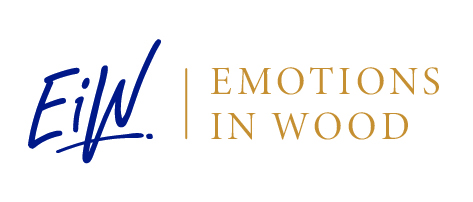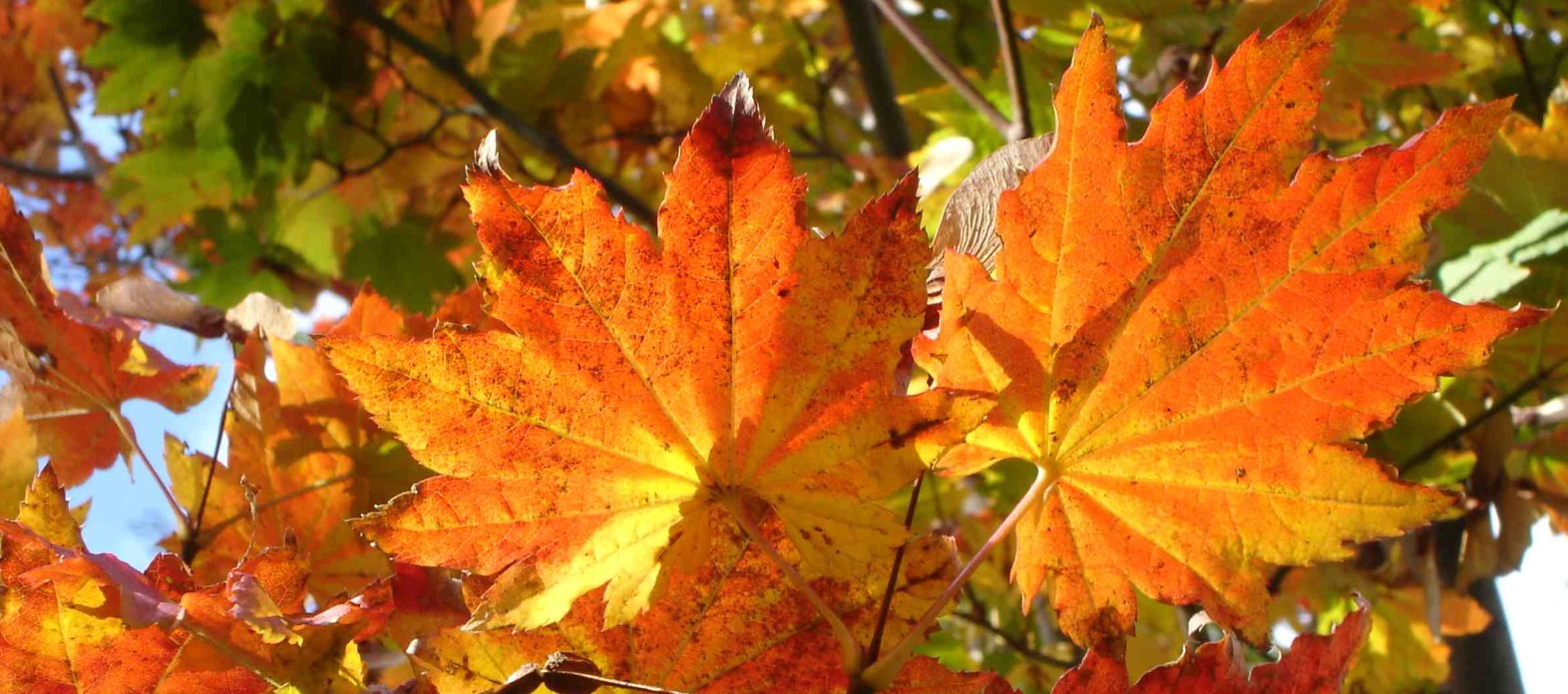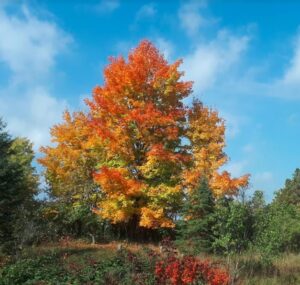
Maple in Bancroft Ontario
The tree
The sugar maple is very common in North America where the soil is deep and well drained, particularly in the eastern regions ranging from Ontario to the Maritime provinces and all the way down to Georgia and Kansas.
Not only does it give us the succulent maple syrup in the spring, it offers us the most beautiful hardwood to work with and it particularly contributes to the colorful richness and the stunning beauty of the eastern Canadian fall.
Did you know, that the fall colors are due to the production of pigments call anthocyanins responsible for the red tones and to the presence of carotenoids which give the orange and yellow hues in the leaves after the destruction of the chlorophyll.
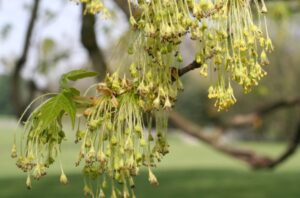
maple flowers
Reproduction:
Maple flowers are green, yellow, orange or red. Maples are an early spring source of pollen and nectar for bees.
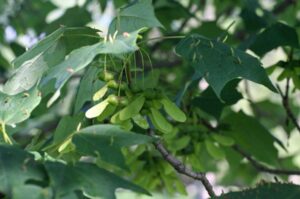
Maple fruits – Samaras
The maple fruits are called samaras, “helicopters”. These seeds occur in distinctive pairs each containing one seed enclosed in a “nutlet” attached to a flattened wing of fibrous, papery tissue. They are shaped to spin as they fall and to carry the seeds a considerable distance on the wind. People often call them “helicopters” due to the way that they spin as they fall.
About the cultural importance of sugar maple:
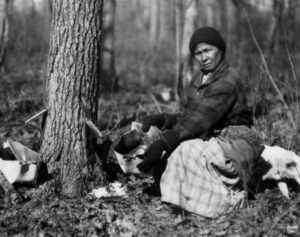
Native Harvesting
The maple leaf of our Canadian flag is a clear sign of how strongly the maple tree is imprinted on our Canadian culture.
In fact it is clear that European settlers learned from the first nations inhabitants how to harvest and use the maple sap and make all the products that we love so much.
Quebecers in particular, thanks to their openness, learned and adopted this cultural skill into their way of life from very early on.
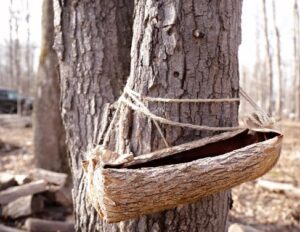
Native bucket
Maple trees were and are well known by the indigenous populations and are named in many indigenous languages. Although all maples contain sweet sap, that of the sugar maple is the most concentrated. It has been used by almost all the indigenous nations who had access to the tree and has been transformed into syrup and sugar by the haudenosaunee, anishinaabeg, wolastoqiyik (malécite), mi’kmaq, innu and algonquin nations as well as several others nations in the USA.
Tangible proofs testify to the fact that indigenous people of the wooded eastern regions have been the first ones to refine the methods of maple syrup production; when Europeans arrived, first nations people were selling large quantities of maple sugar to the fur trading posts.
Sustainability:
Un-certified sugar maple is safe to use.
Note that FSC (Forest Stewardship Council) has the most prominent certification program for lumber and is a good source of information for lumber sustainability world-wide.
Some of the key uses for this hardwood:
• Furniture making and flooring
• Interior trim
• Decorative (banisters etc)
• Utility such as butcher’s blocks
